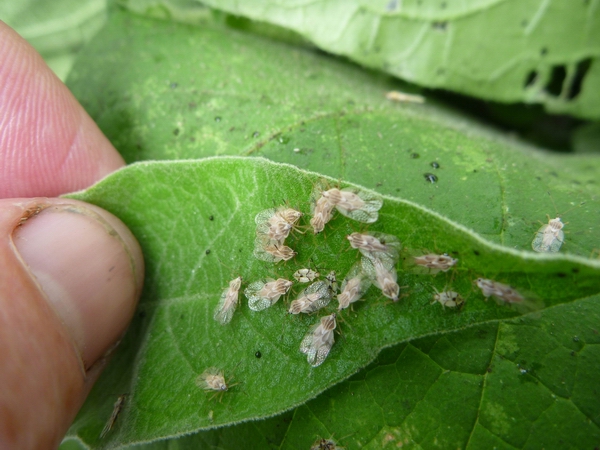Report tiny bug targeting tobacco weed, Northlanders urged
26 Feb 2016, 8:55 AM
A tiny South American bug released in Northland five years ago as a biocontrol for tobacco weed is spreading well, prompting a call for new sightings by an insect expert tracking its movements.
Cable Bay-based entomologist Jenny Dymock works with the regional council and says despite being just 5mm long, tobacco weed lacebugs (Gargaphia decoris) have now travelled up to a whopping 30km from their original 2011 release sites.
She says the bug has now been found in at Kohukohu in the north Hokianga, at Kareponia near Awanui, Oruru near Taipa, at Kerikeri Inlet and at Mangonui.
"The bug's only food source is tobacco weed (also known as woolly nightshade, flannel weed and kerosene plant) and the ones we've been using in New Zealand came from Brazil via South Africa where the lace bug has been used as a biocontrol agent for the past decade."
Dr Dymock says she's keen to hear of any new lacebug sightings in Northland as part of her work to track its spread.
 Tobacco weed lacebugs.
Tobacco weed lacebugs.
Joe Carr, who chairs the regional council's Environmental Management Committee, says he's excited at the opportunities biocontrol agents like the lacebug offer.
"Biological control is the use of naturally occurring enemies and diseases to control pests and weeds and is very much one of the 'smarter pest control tools' at council's disposal."
He says biocontrol isn't a 'silver bullet solution' as it's not designed to eradicate a species, but once established it's among the most cost-effective control methods over a wide area/at remote sites and aims to keep populations of target pests at low levels.
"Northland's already home to a variety of tiny insects and fungi that have been successfully targeting some of our worst weeds and insects for a number of years and now help to protect our wider environment, as well as our fruit, vegetable and timber crops."
Councillor Carr, an Okaihau-based beef farmer and forest owner who represents the council's Hokianga-Kaikohe constituency, says he will be keeping an eye out for the lacebug in his area and encourages others to do the same.
Dr Dymock says adult lace bugs look a little like aphids with patterned lace-like wings and tend to cluster together on the underside of leaves. They feed in groups, sucking the juices out of the leaves which turn yellow and drop off."
Meanwhile, they also lay extremely small eggs – just 0.5mm long – in batches on the underside of leaves and they hatch into nymphs (smaller, wingless versions of the adult).
Dr Dymock says adult females guard eggs and young nymphs from predators and lacebug colonies are are easy to see in hotter summer months on the underside of leaves.
"As well as the mottled yellow appearance to the leaves, a characteristic sign of lace bug presence to look for is spots of dark frass (insect poop) hygienically deposited along the edges of tobacco weed leaves."
Councillor Carr says people keen to learn more about the regional council's biocontrol programme should visit www.nrc.govt.nz/nasties
